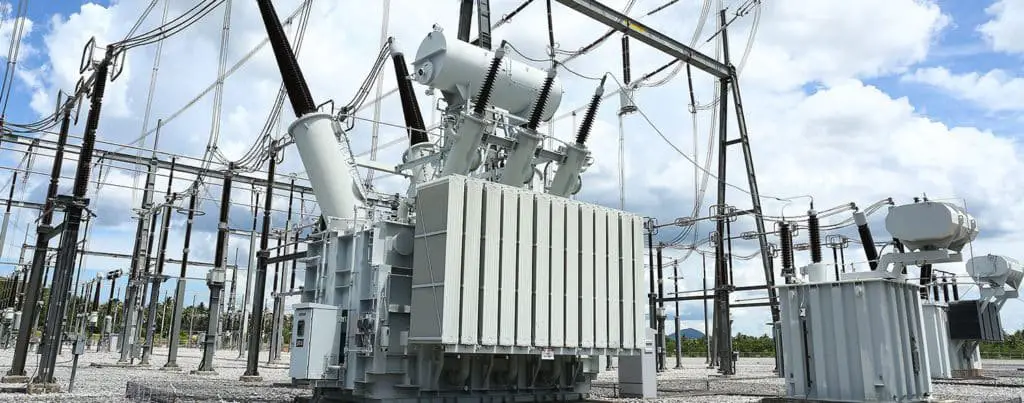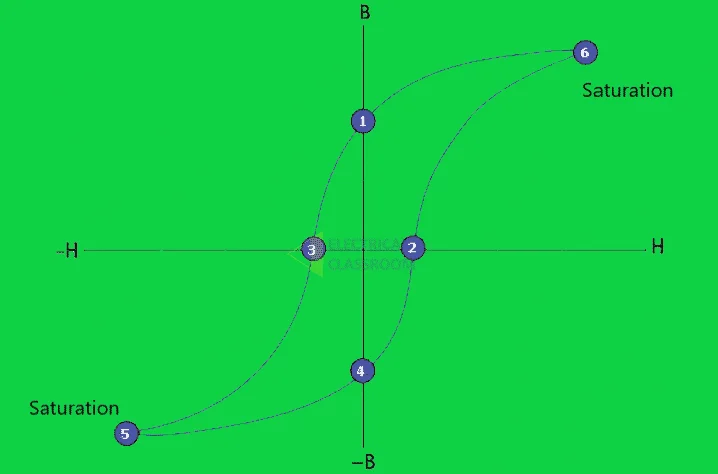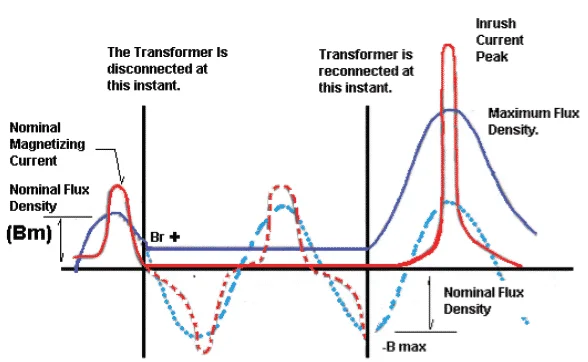Transformer inrush current or magnetization inrush current is a transient input current drawn by a transformer during its energization. Depending on several factors, the magnitude of the magnetization inrush current can be somewhere from 5 to 30 time the rated full load current of the transformer.
This happens even when the transformer is energized at no-load and majority of times does not have any effect on the transformer secondary. Also, inrush current has a transient component of second order harmonics

A transformer is the most important part of the AC transmission and distribution network. It is necessary to ensure the safe operation of the transformer at all undesired conditions; magnetization inrush current is one of them.
When a transformer is de-energized, even though the excitation current is zero, due to hysteresis, a certain amount of flux stays in the core. Depending of the type of core, the magnitude of this residual flux can be somewhere between 50% and 90% of the maximum operating flux.
When the transformer is re-energized, flux is set up over the existing residual flux in the core. In order to maintain the level of flux within the saturation level of the core, the transformer draws current more than its full-load rated. This current is known as the magnetization inrush current.
What causes residual magnetic field?
Let’s take a look at the hysteresis loop below: 1 and 4 are points of zero flux density (B) and 2 & 3 are the points of zero magnetizing force (H). The magnetizing force is directly proportional to the magnetizing current. Therefore, at 2 & 3, the magnetizing current will be zero.

When the transformer is de-energized, the magnetizing current will fall to zero. At this instant, there is still flux available in the core (point 1) which is known as the residual flux (Br)or residual magnetic field. The magnitude of Br depends on the magnetic properties of the core.
Phenomenon of inrush current
In order to understand the phenomenon of magnetization inrush current, let us assume that the transformer was switched off at the zero-crossing of magnetizing current resulting in a residual magnetic field of +Br and brought back to service at the negative maximum of magnetizing current.

At this instant of the transformer was not switched off, the flux density would have been -Bmax. But now the flux density is +Br. Therefore, when reenergized, the flux follows a sinusoidal curve and drives the core through saturation. This results in inrush current (the maximum inrush current is observed when deenergized at zero crossing and reenergizing at the negative peak). The flux density observed is given by Br + 2Bmax.
Factors affecting magnetic inrush current in a transformer
The magnitude if inrush current depends on the point of input voltage waveform at which switching occurs and the magnitude and polarity of the residual magnetic field left in the core.
Based on the above factors, lets evaluate the below conditions and the inrush current during each of them when the transformer secondary is open.
- Switching at zero crossing of the voltage waveform under zero residual magnetism.
- Switching at zero crossing of the voltage waveform under maximum residual magnetism having opposite polarity to that of induced flux.
- Switching at zero crossing of the voltage waveform under maximum residual magnetism having same polarity to that of induced flux.
- Switching at the maximum of the voltage waveform under zero residual magnetism.
- Switching at the maximum of the voltage waveform under maximum residual magnetism having opposite polarity to that of induced flux.
- Switching at the maximum of the voltage waveform under maximum residual magnetism having same polarity to that of induced flux.
Switching at zero crossings of the voltage waveform under zero residual magnetism.
One should always keep in mind that the magnetic flux in the core will be 900 out of phase with the applied voltage. When energized under this condition, as the residual magnetic field is zero, the flux starts from zero. Therefore, under this condition, the inrush current can be few times the normal no-load current. Sometimes it can exceed the full load current.
Switching at zero crossings of the voltage waveform under maximum residual magnetism having opposite polarity to that of induced flux.
Under this condition, the flux will start at a value corresponding to the polarity and magnitude of the residual magnetic field in the core. The inrush current will still be much lesser than that when switching at zero crossing.
Switching at zero crossings of the voltage waveform under maximum residual magnetism having the same polarity to that of induced flux
Under this condition, the flux will start at a value corresponding to the polarity and magnitude of the residual magnetic field in the core. If the residual magnetic field corresponds to the maximum flux density, the no-load inrush current will be avoided.
Switching at the maximum of the voltage waveform under zero residual magnetism
When energized under this condition, due to the lack of residual magnetism, the flux will rise from zero and follows a normal pattern. Therefore, the inrush current will be approximately equal to the no-load current. Most of the times it does not exceed no-load current.
Switching at the maximum of the voltage waveform under maximum residual magnetism having opposite polarity to that of induced flux
When energized under this condition, a transient component is introduced by the residual flux which lies unsymmetrical about the zero axis. In this case, the inrush current will be twice the normal magnetizing current.
Switching at the maximum of the voltage waveform under maximum residual magnetism having the same polarity to that of induced flux
When energized under this condition, a transient component is introduced by the residual flux which lies unsymmetrical about the zero axis but in the opposite side to that during the previous case. The inrush current will be twice the normal magnetizing current.
The magnetizing inrush current may not be harmful to a transformer itself. But the inrush may accidently trip the protection relays. Therefore, the relays must be capable of discriminating between inrush current and fault currents. The values of magnetizing inrush current depend on the point on the source voltage wave at which the transformer is deenergized (this will decide the magnitude of residual flux) and the point on source voltage wave at which reenergization happens.
Useful reference: Study on Power Transformer Inrush Current